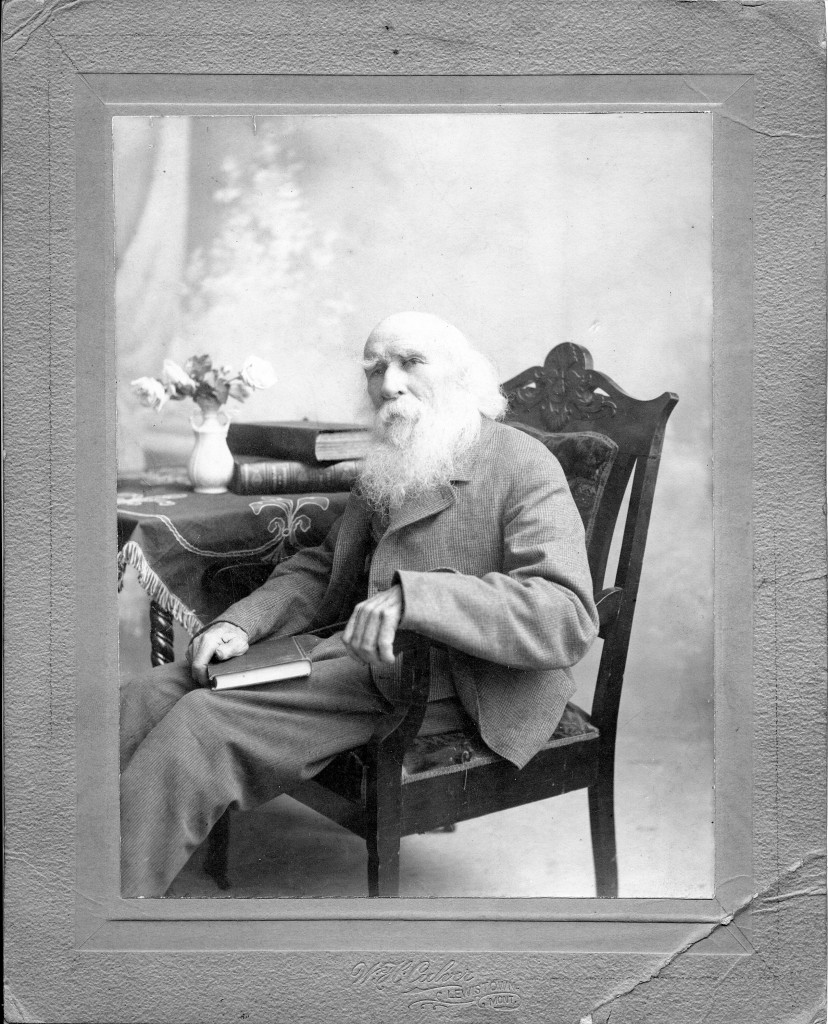I have been thinking a lot about the Scots. Were there Scots in Montana? If so, why did they not leave a lasting mark on the Montana identity? Why, for example, do Montana Universities offer Irish Studies, but no Scottish Studies? Turns out, this is a theme across the West. While many Scots and Scots-Irish helped build the West, their presence has not yet received the same attention as the Irish. No compelling explanation exits for why, but Scottish culture did not become entrenched in the narrative of the West. So, in the next few posts, I’m going to profile five of my very favorite Scottish Montanans, and demonstrate the undeniable mark the Scots have left on Montana.
The Stuart family immigrated to America in 1775. Granville Stuart was born in 1834. After roving the west in his twenties, Granville and his older brother James set up camp in Montana in the fall of 1857. In Montana, Granville founded the town of Deer Lodge and then moved to Virginia City, where he worked as a butcher during the gold rush. In V.C., Granville became friends with many influential Montanans, and went on to become one himself, serving five terms on the Montana Territorial Legislative Assembly and later as Ambassador to Paraguay and Uruguay. In 1865 he founded the Montana Historical Society. A rapacious reader and prolific writer, Stuart possessed one of the largest libraries in the state. In 1860 he and his brother made the 150 mile trek through the Montana winter from Deer Lodge to Missoula because he heard a rumor that a Missoula trapper owned a few books. Eventually he wrote Montana As It Is and Forty Years on the Frontier (published posthumously) both of which lend deep insight into early Montana life. At the end of his life, he served as the Butte Librarian. Somewhere along the way he gained the nickname “Mr. Montana” for his lifelong passion for the state.

Among the many occupations he undertook, Granville Stuart served for a time as the managing partner of the DHS ranch in Central Montana. One of his neighbors, close friends, and fellow bibliophiles during that time was James Fergus. Fergus came to the U.S. via Canada at the age of 22. He founded Little Falls, Minnesota and Fergus Falls, Minnesota before moving to Montana. In Montana, he and his brother Andrew formed the Fergus Livestock and Land Company, one of the biggest and most influential cattle companies in the state. Fergus served as the first judge of the miners’ court in Virginia City, in the Territorial Assembly and helped draft the Montana Constitution. A bald-headed man with a massive white beard and splendid eyebrows, Fergus lived up to his sage-like appearance when in the early 1880s, he decried the over-grazing of the Montana plains. The drought of 1886 and subsequent deathly winter proved his predictions true.

The stories of Stuart and Fergus, I have found, provides good representations of most Scottish émigrés. Many were Scots-Irish whose families had settled in the south. Others, like Fergus came through Canada. Many came because they wanted to not out of necessity. Many were middle class and decently educated. Stereotyped as somber individualists who valued thrift and hard work, they often assimilated well into the American frontier.

